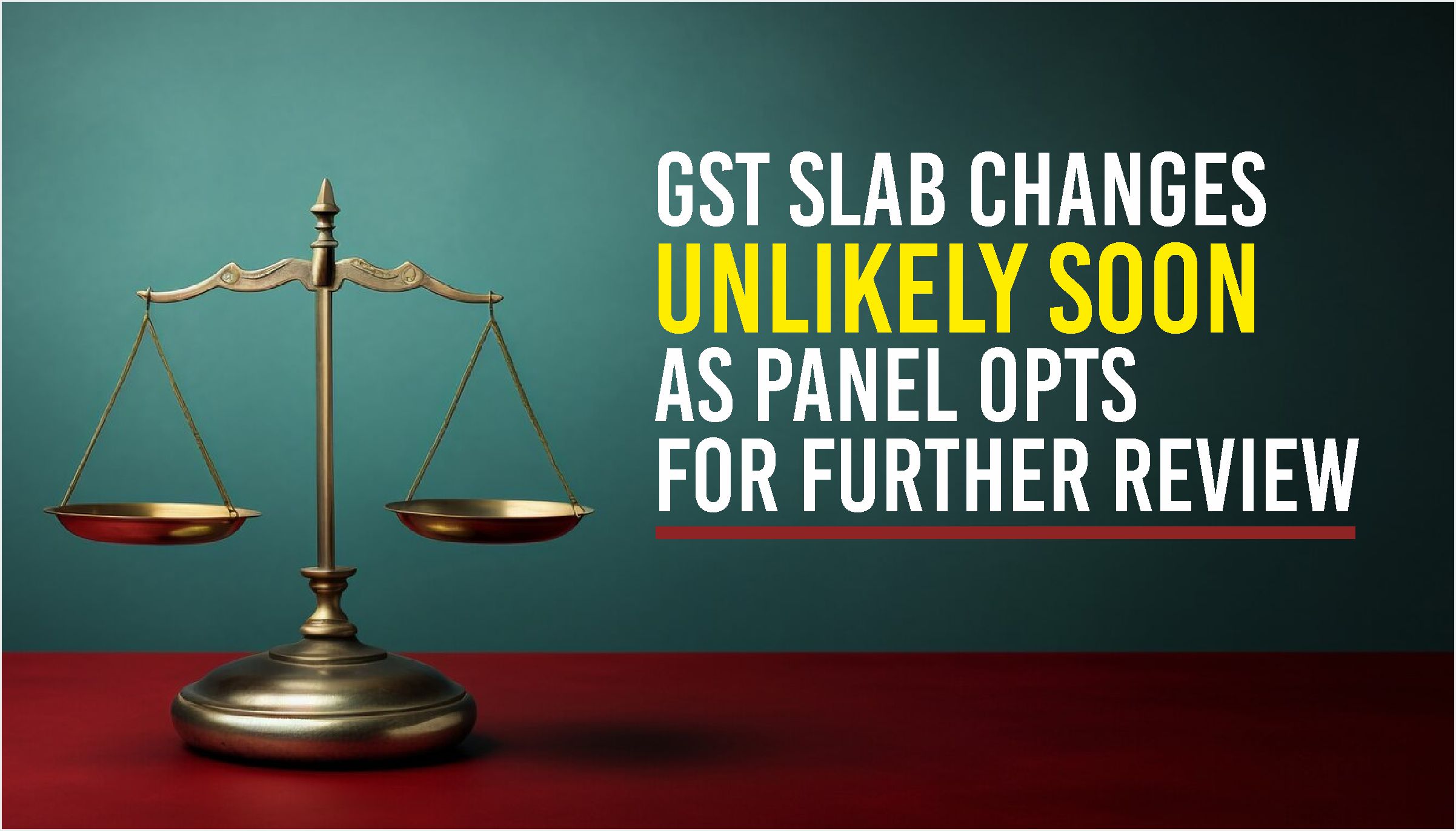GST Slab Changes Unlikely Soon as Panel Opts for Further Review

In a recent meeting of the Group of Ministers (GoM) on rate rationalization under the Goods and Services Tax (GST) regime, no immediate decisions were made regarding the reduction of tax slabs. The committee, comprising state finance ministers and headed by Bihar’s Deputy Chief Minister Samrat Chaudhary, convened to discuss the potential reshuffling of the current GST structure. However, the consensus leaned towards maintaining the status quo, with further discussions slated for September.
Current GST Slabs and Their Significance
The GST framework in India currently consists of five key tax slabs: 0%, 5%, 12%, 18%, and 28%. These slabs cover a wide range of goods and services, with higher rates generally applied to luxury and demerit goods. A compensation cess, ranging from 1% to 290%, is also levied on top of the highest rate of 28% for certain goods, including luxury cars, tobacco products, and aerated drinks.
The 18% slab is particularly significant, accounting for approximately 70% of the total GST revenue. This high dependency on the 18% slab has made any potential reduction a matter of intense debate, as even a minor adjustment could significantly impact the revenue collected.
Anomalies in the GST Slabs
Despite the broad categorization, several anomalies persist within the current GST structure. For instance, while some essential goods like sanitary napkins are taxed at a reduced rate, other critical items such as life-saving medicines fall under higher slabs. Another example is the restaurant sector, where services in air-conditioned restaurants are taxed at 18%, while non-AC restaurants enjoy a lower 5% rate. Such discrepancies have led to calls for a more rationalized and simplified tax regime.
No Immediate Changes, But Deliberations Continue
During the GoM meeting, it was highlighted that reducing the 18% slab by even 1% could lead to a significant reduction in revenue. This concern over revenue neutrality, combined with the current economic uncertainties, has made the government cautious about any immediate changes.
Bihar’s Deputy CM Samrat Chaudhary, who is leading the GoM, stated that while discussions took place on rate rationalization, there was no consensus on altering the slabs. “A change in slabs will not happen immediately. Around 70% of the GST revenue is coming from the 18% tax slab. Even a 1 percentage point reduction would result in a significant revenue loss. So the change in slabs is not going to be easy,” he said.
Focus on Common-Use Items
Despite the reluctance to alter the overall structure, the committee is expected to review the placement of various items within the existing slabs. Items of mass public use, for example, might be recommended for a shift from the 12% slab to the 5% slab, aiming to ease the tax burden on essential goods. However, this decision will only be finalized after further discussions and data analysis.
Diverging Views Among States
The meeting also revealed divergent views among states. West Bengal Finance Minister Chandrima Bhattacharya and Karnataka Revenue Minister Krishna Byre Gowda were among those who voiced their opposition to any changes in the GST slabs. Gowda emphasized that the current GST structure has broadly stabilized, and there is no need to disturb it at this juncture.
On the other hand, there are ongoing discussions about lowering the GST on health and life insurance premiums, which currently stand at 18%. This issue, however, has been referred to the fitment committee for further analysis, with no immediate decisions expected.
The Road Ahead
The GoM will present its findings and recommendations to the GST Council in its next meeting on September 9. While the committee is expected to continue its deliberations, any significant changes to the GST structure are unlikely to occur in the near future. The overarching concern remains the need to balance tax rationalization with revenue stability, a challenge that will continue to shape the discussions in the coming months.
